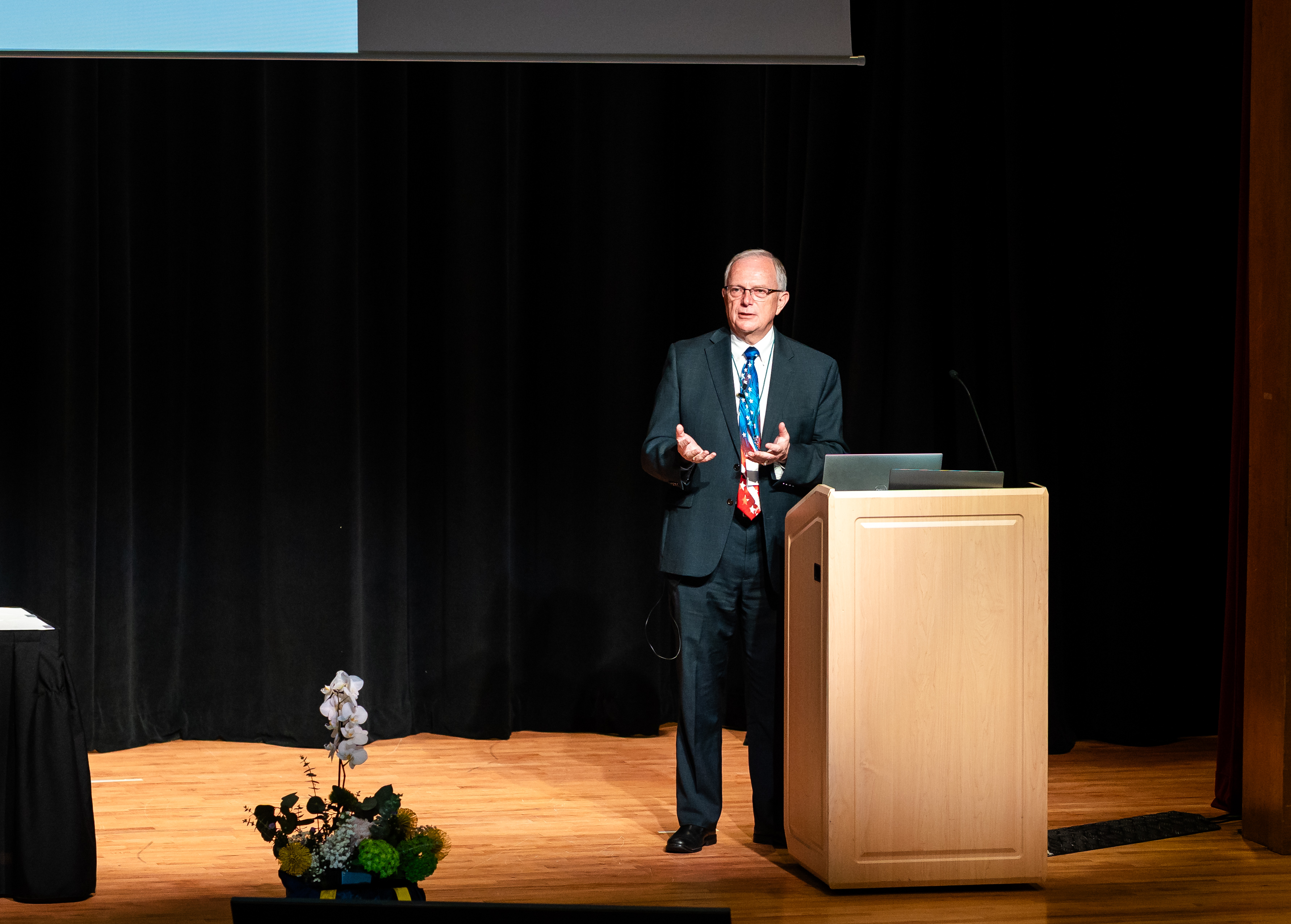Economic Logic Meets Digital Ingenuity: Dr. Bruce D. Jette’s Call for Smarter Acquisition at ARC 2025 Keynote Address at the ARC Annual Review

During the Automotive Research Center (ARC) Annual Review 2025, held June 17–18 in Ann Arbor, Dr. Bruce D. Jette—President & CEO of Innvistra LLC and former Assistant Secretary of the Army for Acquisition, Logistics, and Technology (ASA(ALT))—delivered a keynote address titled “Defense Economics Drives Digital Design and Opportunity for the Knowledgeable and Creative.”
With an audience of over 250 attendees from the Army, academia, and defense industries, Dr. Jette brought sharp focus to the economic forces shaping military modernization and acquisition in the digital age. Drawing on decades of leadership experience—from battlefield command to the Pentagon—he examined the complex interplay between cost, capability, and creativity in delivering next-generation systems for the warfighter. His address offered a direct, forward-thinking critique of the defense acquisition landscape, emphasizing the need for economic discipline, digital-first engineering, and human-centered approach as foundational principles for modernization.
Dr. Jette’s core message was clear: defense innovation begins with digital mastery, sound economics, and smarter acquisition models.
ARC-GVSC: A Model for Acquisition Reform
Dr. Jette highlighted the Automotive Research Center’s long-standing partnership with the U.S. Army Ground Vehicle Systems Center (GVSC), recognizing it as a live demonstration of how mission-aligned academic research can deliver tangible results. The ARC-GVSC collaboration exemplifies how modular digital design, model-based systems engineering, and real-world relevance can accelerate innovation while maintaining cost efficiency.
“The ARC proves that when knowledge and creativity are backed by discipline and direction, the Army gets better answers—faster and cheaper,” Dr. Jette noted.
Enhanced Efficiency: Human-Centered Digital Acquisition
Dr. Jette underscored the importance of achieving efficiency in acquisition—a digitalized, seamless process in which engineering innovation is fully synchronized with end-user needs, operational constraints, and lifecycle goals. He advocated for upstream collaboration among operators, technologists, and acquisition leaders, enabling decisions to be informed early, not retroactively. This kind of integration, he argued, is made possible through open digital architectures, digital prototyping, and adaptive system design—domains in which ARC plays a leading national role.
Closing the Communication and Capability Gap
Citing the limited STEM background of many requirement-setters, Dr. Jette stressed the importance of clear, interdisciplinary communication across the acquisition enterprise. He warned that misaligned visions and underinformed requirements can lead to missed opportunities or failed systems. He called on academic institutions to act not only as sources of innovation but as vital conduits of technical understanding for decision-makers.
Digital First, Physical Only When Necessary
Dr. Jette called for reversing traditional defense development workflows: physical prototypes should be the outcome, not the starting point. Virtual modeling and simulation are now advanced enough to inform early-stage design decisions and must be embraced as cost-saving, time-accelerating enablers. He noted that this approach is already embedded in ARC-GVSC collaborations and is yielding tangible results.
Looking Ahead: AI, Quantum, and the Right Questions
While acknowledging the transformative potential of artificial intelligence and quantum computing, Dr. Jette reminded the audience that technical capacity alone is insufficient. What matters, he argued, is ensuring that these systems are designed to ask and answer the right questions—questions grounded in real-world missions and battlefield dynamics.
“We must program systems not only to solve problems, but to understand and frame the right ones,” he said.
Creativity Within Constraints: ARC’s Value to the Army
Dr. Jette concluded by acknowledging the challenge of applying academic creativity within the resource and time constraints of military contexts. He praised the ARC as a unique institution that translates exploratory science into tactical, testable, and mission-aligned solutions—delivering value without drifting from defense priorities.
Acknowledging Vision and Impact
“Dr. Jette’s insights into the economic and structural dimensions of acquisition brought critically valuable clarity to our community,” said Prof. Bogdan Epureanu, Director of the Automotive Research Center. “His emphasis on digital integration and a human-centered approach reinforces the ARC’s core mission to enable smarter, more agile defense innovation.”
”Dr. Jette’s address was both timely and transformative,” added Dr. David Gorsich, Chief Scientist at GVSC. “His framing of acquisition as a coordinated digital process aligns with how GVSC and ARC are rethinking requirements validation, prototyping, system integration, and the future of vehicle design.”
Mission-Focused. Digitally Driven. Economically Sound
Dr. Jette’s keynote served as a powerful endorsement of the ARC’s evolving role in reshaping how the U.S. Army acquires and fields next-generation systems. By aligning technical excellence with acquisition pragmatism, the ARC is not only accelerating innovation—but also helping deliver the right capabilities, at the right time, for the warfighter.
“The battlefield of the future belongs to those who can master digital tools, think economically, and keep the human mission at the center,” Dr. Jette noted.

